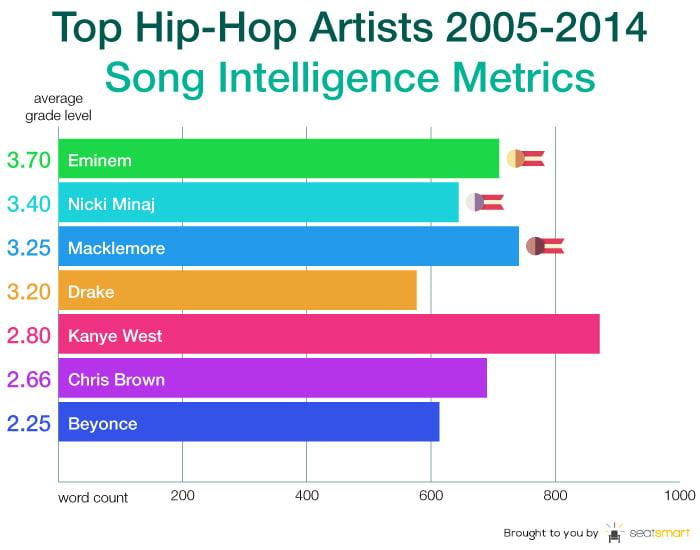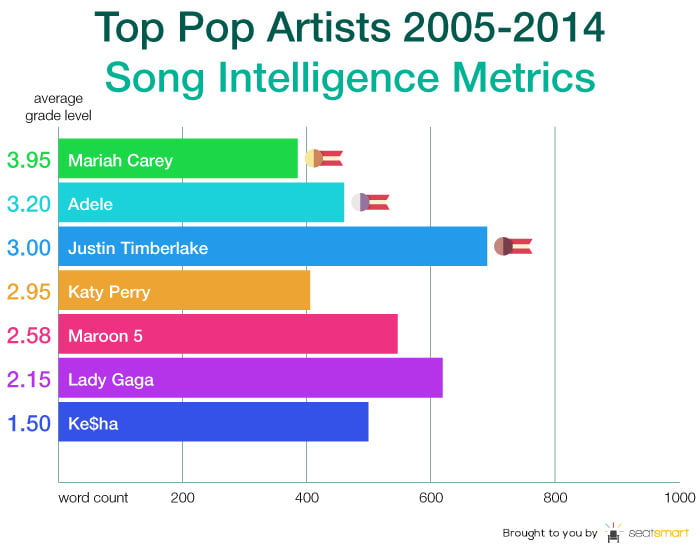Summary, Solutions and Conclusions
The science of,
- coercion
- cultural indoctrination
- behavior modification,
…has a lot to do with the world’s current crises, history of musical instrument tuning, and the media.
This review of Rockefeller Foundation literature sets the record straight regarding the organization’s involvement with the military-medical-petrochemical-pharmaceutical cartel’s focus on acoustic science to identify sounds useful in war.
Modern musical technologies that produce vibrational frequencies applicable to public persuasion and crowd control, and the synchronous institutional standardization of A=440Hz musical instrument tuning used throughout the Western World as advanced by partnered military and commercial investors during the first half of the Twentieth Century.
President Dwight Eisenhower protested against this “beast,” warning our parents that globalist threats to “Economic, Political, even Spiritual” freedoms were mounting.(34) Populations are now tethered like sheep by psycho-emotional attachments and addictions to whatever this cartel sells and promotes through radio and television. This amounts to ENSLAVEMENT for the conduct of genocide.\In essence, this “military-industrial complex,” rooted in the world of investment banking, has advanced a covert operation to control populations most loudly and profitably.
Music bioenergetically affects your body chemistry, psychoneuroimmunology, and health.(35) Your body is now vibrating musically, audibly and subliminally, according to an institutionally imposed frequency that resonates in harmony with aggression and in dissonance with LOVE.
Intensive research into the military and commercial value of compelling “herd behavior” with music to induce stress, promote diseases, and suppress spirituality, has enabled the world’s wealthiest people to exercise cultural control through “programming.”
From this historic evidence in Rockefeller Foundation Archives, it is clear that the investors in A=440Hz “standard tuning,” some of the least trust-worthy entities on earth, directed the U.S. Navy’s involvement in this “black-op” engaging the consortium-controlled networks.
These findings strongly suggest the military’s acoustic frequency research and technological developments advanced during the 1930s to induce psychosocial pathology, herd behavior, emotional distress, and “mass hysteria,” were successfully deployed and are now being used against We The People.
Alternatively, musical frequencies most beneficial to health, psychosocial harmony, and world peace have been suppressed. These findings offer a most reasonable, simple, pleasant, and powerful remedy residing in restoring naturally preferred frequencies to music.
Instruments and voices tuned to A=444Hz frequency are far more acoustically pleasing, instinctively attractive, kinesthetically stimulating, spiritually refreshing, scientifically linked to genetic repair, and arguably, even resonating pure LOVE.
Given that the education and entertainment industries are so negatively controlled and behaviorally controlling, alternatives to the major networks are now required to free We The People. This was the original American assignment given the media according to the U.S.. Constitution and Bill of Rights, vanquished by the Rockefeller-Rothschild industrialists.
 Many musicians, mathematicians, physicians, physicists, and even geneticists, now celebrate the emergence of truth about A=444Hz (C(5)=528Hz) as an apparent carrier wave of LOVE, broadcasting universally from the heart of the electromagnetic energy matrix.(7, 22)
Many musicians, mathematicians, physicians, physicists, and even geneticists, now celebrate the emergence of truth about A=444Hz (C(5)=528Hz) as an apparent carrier wave of LOVE, broadcasting universally from the heart of the electromagnetic energy matrix.(7, 22)
The vast majority of objective investigators now view these revelations as an opportunity to rediscover our spiritual roots in music, in accordance with an accelerating Spiritual Renaissance. The emergence of this knowledge is perfectly timed to remedy otherwise impossible problems imposed on the world by unelected leaders of economic and geopolitical chaos.
Thus, musicians, vocalists, and audiences are urged to discuss these findings, reject the militarization of music that has been secretly administered, and retune instruments, voices, and ears to frequencies most sustaining and healing. Restoring integrity to the performing arts and sciences this way will impact populations most beneficially.
A not-for-profit service operating by donation to provide A=444Hz (C(5)=528Hz) frequency transpositions of every genre of music is under construction to accommodate the needs and encouragements of recording artists and audiophiles worldwide advancing this Healthy World Revolution.
Musicians and vocalists are the life-stream of the music industry, and humanity’s last hope for physical salvation and Divine-human connection. The spiritual musical portals through which planetary rebirth and harmonization is destined, await your vision and activism.
Music Beats
Much has been said and written by many people about the harmfulness of the beats in rock music. One of the most important reasons it is harmful is because it calls the demons. This use of music goes way back in African history. It is also found in Indian history. The author has, in her possession, tapes of songs to the oldest known, original gods of India. These come from Tamil in the southern part of India and go back to the early time of Indian history. From these countries, and particularly from Africa, the music and religion spread in the world because of the dispersion of people in slavery. Even though slaves, people preserved their loyalty to their religion through whatever means they could. There are three main religions which are still extant which grew out of this dispersion. In Haiti, it is called Voodoo. In Cuba, it is called Santeria, and in Brazil, it is called Condomble. In each of these religions, as in African and Indian religions specific rhythms are used to call specific gods. This is the purpose of the rituals performed.
Drums are played, there is dancing. A certain rhythm is played, depending on which god is desired, and that god comes and possesses individuals. The same exact rhythms are used in each of the three religions named above, in African and Indian music, in rock music and in music used in meetings of faith healers. It seems as though the god is willing to come whenever called by anyone. Does the god come to celebration churches when the god’s rhythm is played in Christian rock music, even though the people present do not realize that they are calling a god?
There is quite a strong consensus that the god does come.
The story is told of a family where the husband liked very much to listen to Christian music radio stations (country gospel and contemporary Christian). His wife, how ever, did not appreciate this music, so she banned her husband with the music to a bedroom with a closed door. As time went on, strange things occurred in their house. There were odd noises, and things moved unexpectedly. When she learned that the beat in rock music calls the demons,
she said, “That is the answer. My husband’s music is calling the spirits into our house.”
So they determined to stop the music, and immediately the strange occurrences also stopped. They did not know that they were calling gods into their house.
The music industry is Dumbing Us Down and Brainwashing Us into Liking Terrible Songs
In 2008, Adrian North of Scotland’s Heriot-Watt University published the largest study yet of musical taste, involving 36,000 people, 60 countries and three years of work. He asked each participant to rank their favorite genres of music. He discovered that the most common characteristic among all genre listeners was creativity. However, one group of listeners showed a genuine and significant lack of creativity: pop music lovers.
Music can nourish our minds like almost nothing else, so when a mega-industry is devoted to selling the least inspired music they can, they’re short-changing all of us. A survey of other research on music reveals that pop music has gotten worse over the last 50 years. Not only that, it’s been used to brainwash listeners through predatory marketing strategies across all media channels.
Pop music hasn’t always been that way. Researchers measured the variety of words, chord variations and volume of songs across the decades sine the 1950s. Unsurprisingly, they found that modern pop is a watered-down version of what John, Paul, George and Ringo used to rock the charts with. Since the 1950s, vocal timbre — the character of the voice — has become less diverse and pitch content has become totally monochromatic (fewer chord and melodic variations), while everything has gotten much louder overall. Our popular music is literally being dumbed down.
Researchers have thoroughly documented that pop music is the “heavy equipment” of the adolescent years. It is far more influential than computers, television and movies in shaping how kids grow up. That’s why it matters when it’s getting worse. Billboard charts fuel the mainstream market, identifying safe bets for movie soundtracks, commercials and background music, all of which ensure that a popular song is impossible to avoid. And despite common sense, songs aren’t played because they are popular; they’re played to make them popular.1
So, all popular songs sound the same, that they’re all about the same stuff, that they’re too loud, and that listening to them will turn you into a deaf, fornicating heathen and the crops will sour. Pop songs are dumb and only getting dumber, to the point where most hits today barely require a second-grade reading level to understand them.
According to SeatSmart analyst Andrew Powell-Morse, that actually represents a downward trend over the past 10 years, when the audiences of 2005 needed at least a third-grade education to suss out the lyrical complexity of songs like, for example, 50 Cent’s “Candy Shop.” Of course, Powell-Morse doesn’t expect those third graders to understand 50’s intricate use of a lollipop as metaphor for his male genitilia. His analysis relies solely on a song’s Readability Score, which allows you to plug in a piece of text and have it spit back an average grade level, based solely on the relative difficulty of its individual words. And by that metric, the study opines, 50 Cent may as well be Thomas Pynchon compared to the lyricists of today.2
If we care about our culture — and if we care about our minds — we’ll vote with our ears. If the formulas stop paying off for the industry, we might get real music back into the mainstream.
A New “Religion” of Materialism?
It’s no secret that the music industry has a huge impact on the direction of our culture. When the industry’s biggest stars are “obsessed” with the macabre, and their performances and music videos promote evil acts, demon possession and darkness, what kind of culture will be created? Will spiritual values survive in a world where darkness is increasingly embraced and glorified?
In our Wickedpedia article on symbolism, a case is made of how the increasing use of the all-seeing eye and other esoteric dark symbolism in the music industry likely reflect an increasing control that the elite members of society have over the music industry and their desire to indoctrinate the masses into the occult.
A London Guardian report entitled “Lady Gaga and the New World Order” gives serious credence to a website that not only discusses how popular music is used to keep people downtrodden and distracted, but how it is replete with messages and symbolism bragging about how the elite are using entertainment to keep the masses enslaved.
The Vigilant Citizen has a good claim to be the world’s most distinctive music critic. On his website, vigilantcitizen.com, he describes himself as a graduate in communications and politics and a producer for “some fairly well-known ‘urban’ artists”. He has spent five years researching “Theosophy, Freemasonry, Rosicrucianism, the Bavarian Illuminati and Western Occultism”. All of these interests converge in his insanely detailed analyses of the symbolism of pop videos and lyrics. Thus Pink’s MTV awards performance mimics a Masonic initiation; Jay-Z’s Run This Town trumpets the coming of the New World Order (NWO); and the video for Black Eyed Peas’ Imma Be Rocking That Body advances “the transhumanist and police state agenda”.
What’s surprising is the methodical, matter-of-fact, occasionally humorous tone of his essays. He does not write like a swivel-eyed loon rambling about Obamunism (although, inevitably, there’s an unsavory fascination with Jewish influence). To those who don’t study occult symbolism, he concedes, it might all seem “totally far-fetched and ridiculous”, but for those in the know “I was simply stating the obvious”. His examinations are certainly exhaustive. Scrolling down his densely illustrated posts, you may find yourself thinking, “Say, Lady Gaga really does very often cover up one eye. And a lot of pop stars really do pretend to be robots.”
Although the Vigilant Citizen insists he is neither a political conservative nor a religious fundamentalist, he is heir to such off-piste 60s pop critics as the Reverend David A Noebel, author of Communism, Hypnotism and the Beatles, and Gary Allen, who theorized that post-Rubber Soul Beatles material was so technically sophisticated that it must have been “put together by behavioral scientists in some think tank”. Leftwing thinkers at the time had their own take on pop as mind control. Peter Watkins’ 1967 movie Privilege starred Manfred Mann’s Paul Jones as a puppet of the state, pacifying the populace with catchy patriotic tunes. In such analysis, the villains may change but the mechanisms remain the same.
The fact that the Guardian writer seriously discusses how popular music is littered with elitist symbolism without sneering the whole thing off as a conspiranoid delusion is an example of how abundantly clear this process is becoming. This kind of subject matter is no longer “out there,” it’s no longer considered wild to simply point out that popular culture and particularly popular music is exercising an undue and insidious influence on the moral, societal, and spiritual development of younger generations and humanity in general.
Nowhere was it more obvious than during a recent Beyonce performance where she was surrounded by dancing riot cops. As the vigilant citizen website explains, this is about indoctrinating people to accept “the “robotization” of the human body and the gradual introduction of a virtual police state”. In other essays, Gaga’s habit of covering one eye is explained as her rejection of God and her induction as a Luciferian priestess. Notice how people like Christina Aguilera copy Gaga’s symbolism of humans as soulless robots.
While the website sometimes uses too broad a brush with which to identify servants of the babylon system, for example, a Bob Dylan clip is misconstrued as him saying he sold his sold to the devil, when in fact as any Dylan fan will know, in the late 70’s he became a Christian and started releasing gospel music, it does an excellent job in pointing the finger at those who really have metaphorically sold their souls – people like Katy Perry – to be used as tools with which to keep the masses in a perpetual state of disorder and spiritual decay.
Tearing down the facade of this babylon system and dragging people away from the constant hypnotic distractions of sports, dumbed-down music, fashion and every other sideshow offered up to turn our heads from our true spiritual development is as if not more important than educating people about the political aspects of the new world order agenda.
Apart from creating confusion and negativity towards esoteric spirituality there may be a greater agenda at play. It appears the music industry is working towards creating its own form of “religion”: a way of life based on the worship of popular artists, mindless materialism and socially destructive behaviors.
Artists mocking religion and placing themselves in positions of worship is not a new phenomenon. As far back as 1966, John Lennon boasted that the Beatles were more popular than Christ and that Christianity would pass away.

More recently Marilyn Manson stated that he would be remembered as “the person who brought an end to Christianity”.

When you begin to look it is amazing to see just how many artists mock religion, particularly Christianity, raising themselves to the status of gods:
Jay-Z produced an album titled Jayhovah – a play on what many consider to be the name of God.
Jay-Z’s wife at the time, Beyonce stirred controversy when she posed for a picture in front of a painting of the last supper, her image covering that of Jesus. Beyonce has also posed as the Virgin Mary in a replication of Michaelangelo’s La Pieta, a scene where Mary holds Jesus’ body just after it has been brought down from the cross.
Kanye West – who’s nickname is Yeezy – produced an album called ‘Yeezus’ on which there was a song called ‘I am a god’.












